Success For All Students
VEX GO STEM Labs focus on 3 foundational values to ensure the success of all students:
Engage Students
- Promote Active Learning
- Hands-on Activities Immediately Introduced
- Student Voice & Choice via the Choice Board
Teach for Understanding
- Organized Around Essential Questions
- Learning Goals Aligned to Instruction
- Specific, Measurable and Observable Learning Goals
Research-Based Methods
- Spatial Reasoning for STEM Success
- Students Demonstrate Competency
- Making a Personal Connection to Learning

VEX GO STEM Labs Engage Students
- VEX GO STEM Labs promote active learning.
- Hands-on activities are immediately introduced.
- VEX GO STEM Lab Units offer students a voice and choice via the Choice Board.
VEX GO STEM Labs Promote Active Learning
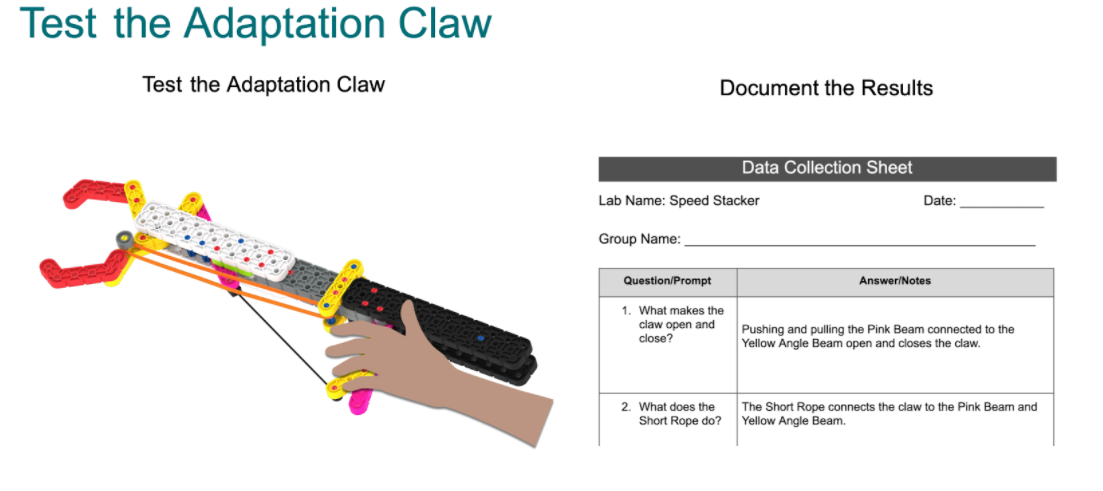
With VEX GO STEM Labs, students have fun while being active participants in their learning as they explore different STEM topics.
VEX GO STEM Labs are broken up into three sections:
- Engage
- Play
- Share
Each section contains active learning that encourages students to build, test, and collaborate.
Hands-On Activities
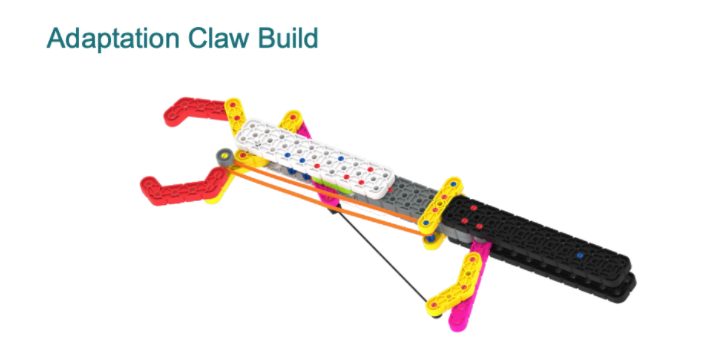
Each VEX GO STEM Lab starts with a personal connection to the theme of the Lab in the Engage section. Then, students start building!
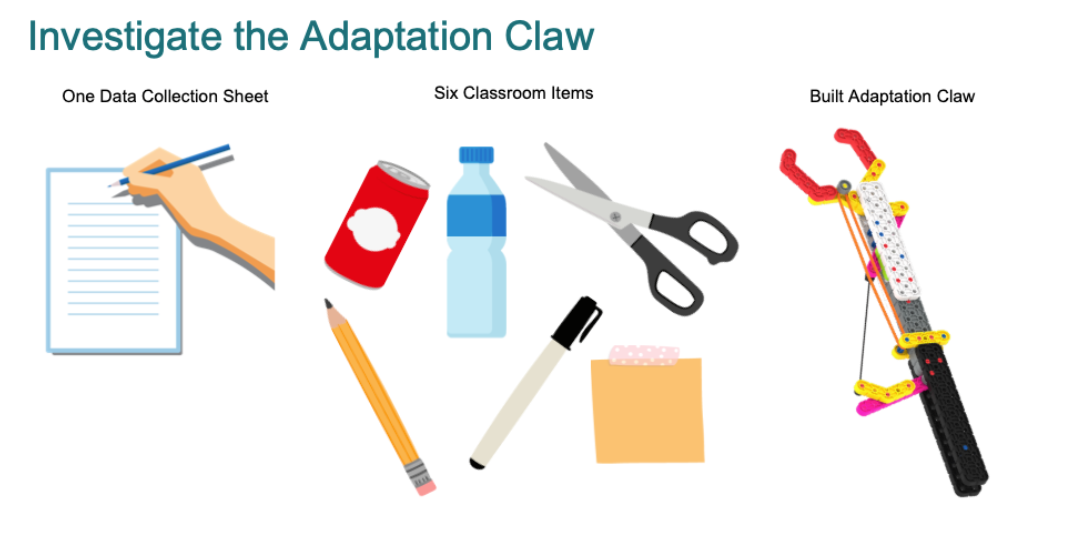
In the Play sections, they use the build to investigate a concept. Examples of these activities include:
- Investigating how the build works
- Testing how the build can be used to complete a task.
Students are encouraged to participate in reflective discussions or demonstrate their projects in the Share section.
Choice Board
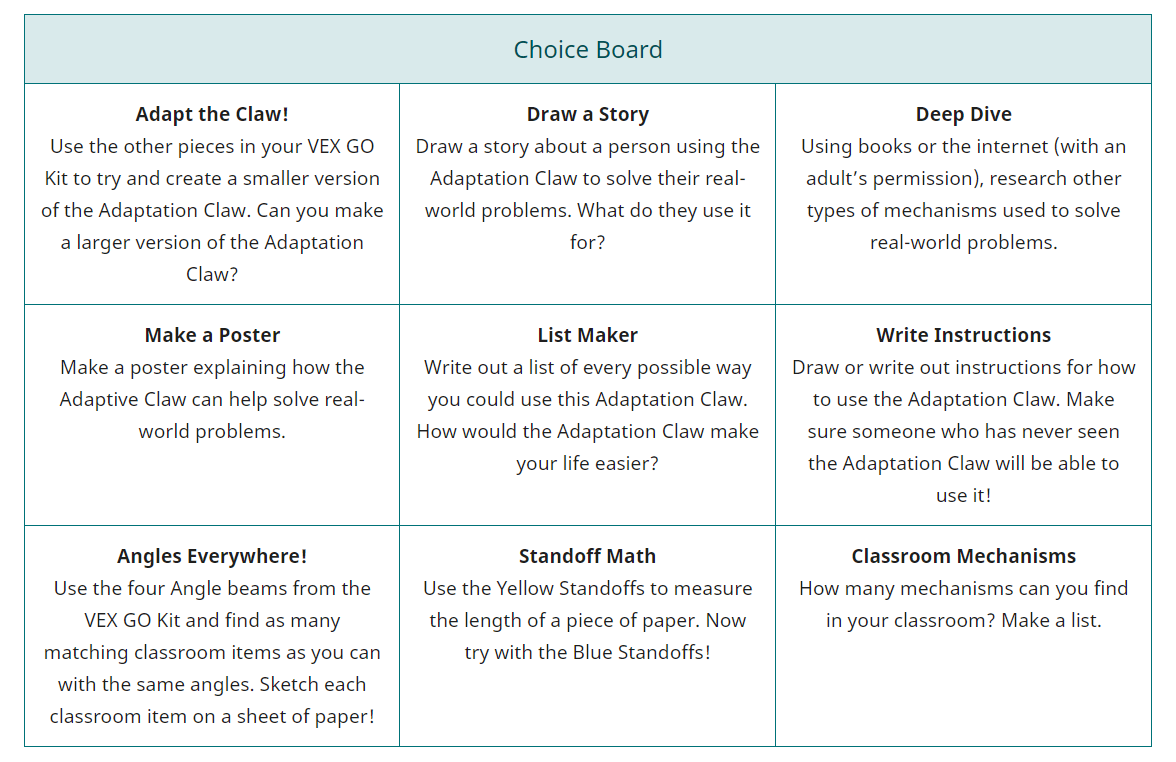
Each Unit contains a Choice Board, which can be used to help differentiate instruction while also fostering student voice and choice in their learning.
Choice Board activities can be done at any point in the VEX GO STEM Lab. Students are able to become active participants in their learning as they use the Choice Board.
VEX GO STEM Labs Teach for Understanding
- VEX GO STEM Labs are organized around Essential Questions.
- Learning Goals are aligned to instruction.
- Learning Goals are specific, measurable and observable.
Essential Questions & Understandings
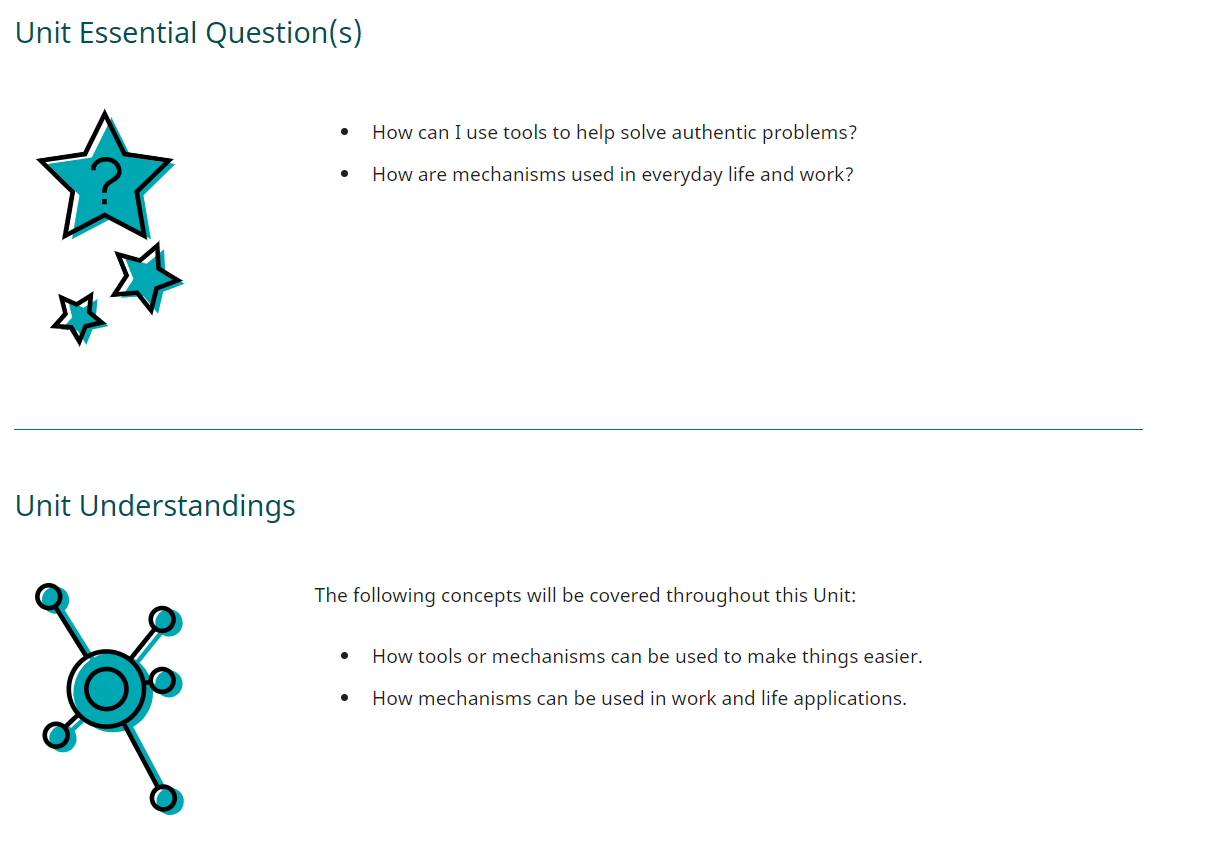
Each VEX GO STEM Lab Unit is designed around Essential Questions and Unit Understandings.
Essential Questions:
- Stimulate thought
- Provoke inquiry
- Guide student learning
Unit Understandings:
- Connect to the Essential Questions
- Explain the main theme of the Unit.
Student inquiry drives the lesson, allowing teachers to be coaches of understandings, instead of a supplier of facts.
Learning Goals
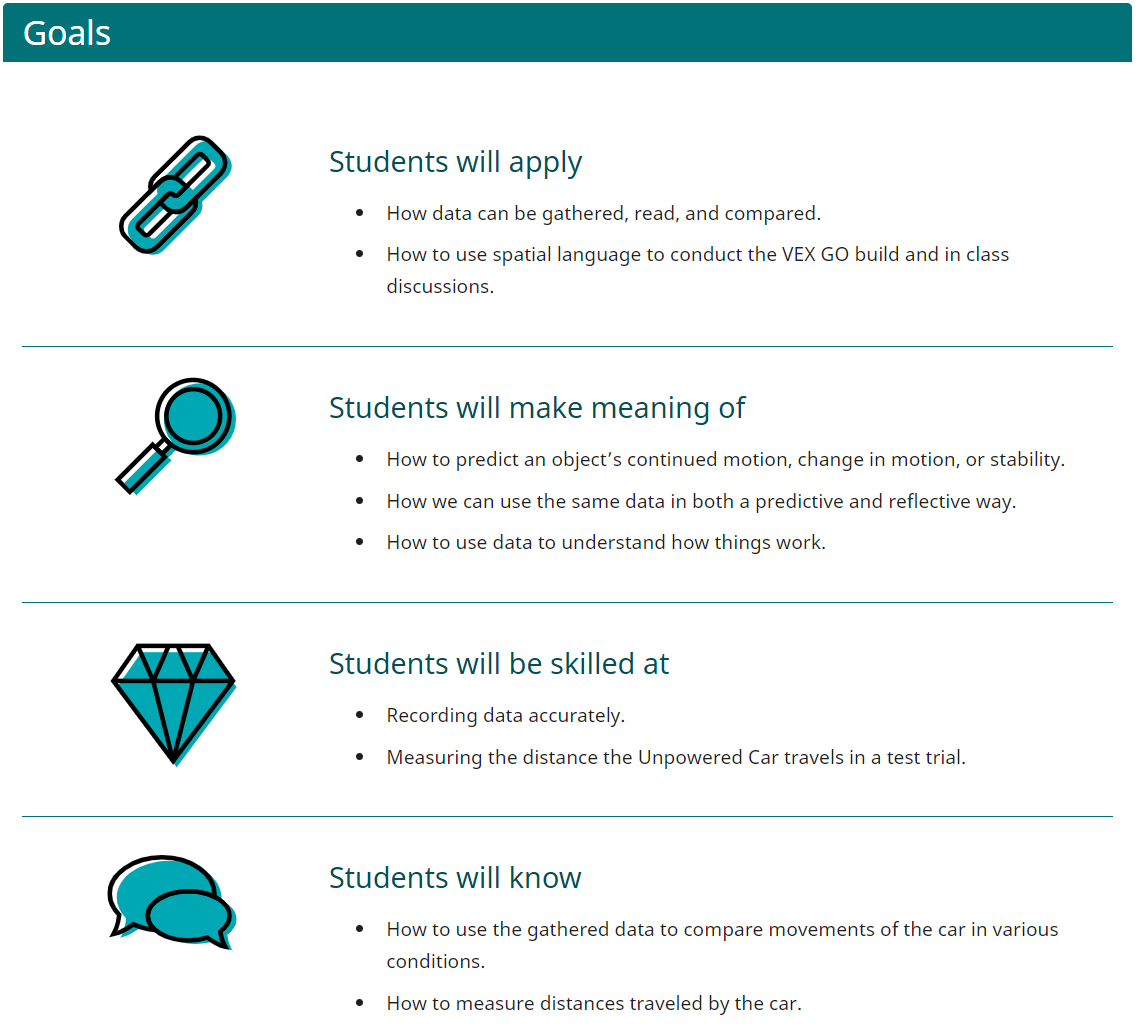
Each VEX GO STEM Lab begins with student goals to indicate to the teacher what the students will be learning by the end of the Lab. These can help to frame the Lab as it is implemented in the classroom.
- Apply: How will students apply new skills or knowledge in the Lab?
- Make Meaning Of: These align with the Unit Essential Question. What is the conceptual meaning of this Lab?
- Be Skilled At: What specific activities will students be familiar with at the end of this Lab?
- Know: What big picture concepts are being addressed in this Lab?
Objectives
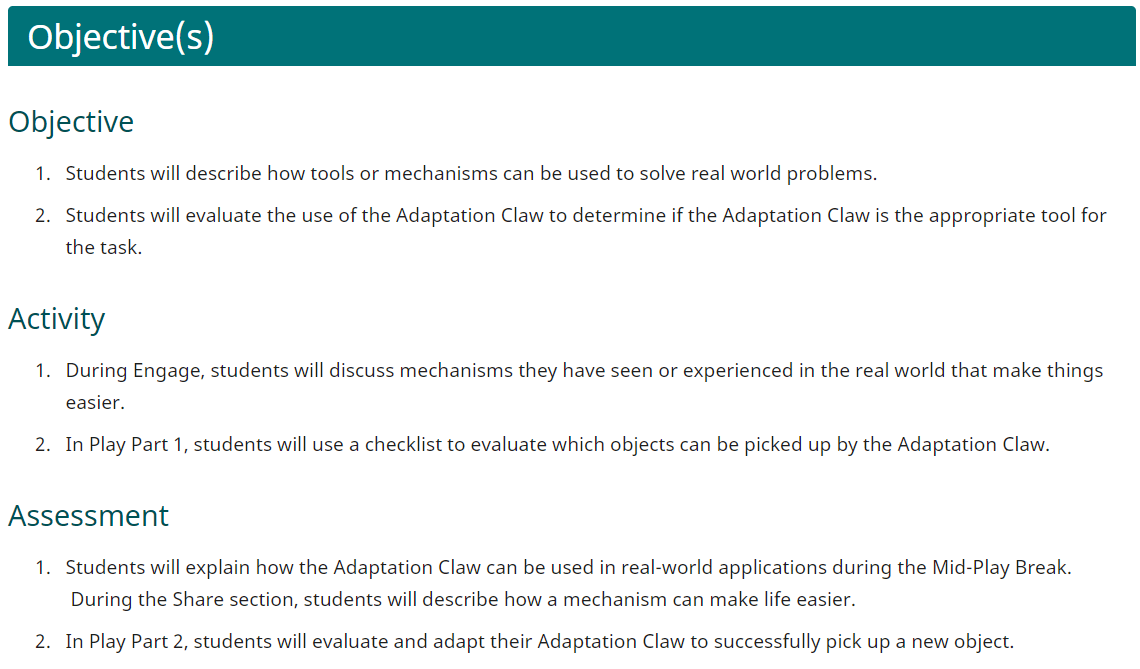
VEX GO STEM Lab learning objectives are specific, measurable, and observable. Each objective and assessment is aligned to Lab activities.
- Objectives show what the students are learning.
- Activities are what students are doing in the Lab to practice those skills.
- Assessments are how the students demonstrate the knowledge of their skills.
Research-Based Strategies
- Spatial reasoning as a predictor for STEM success
- Applying spatial reasoning with VEX GO STEM Labs
- Opportunity to demonstrate student competency
- Making a personal connection to learning
Spatial Reasoning
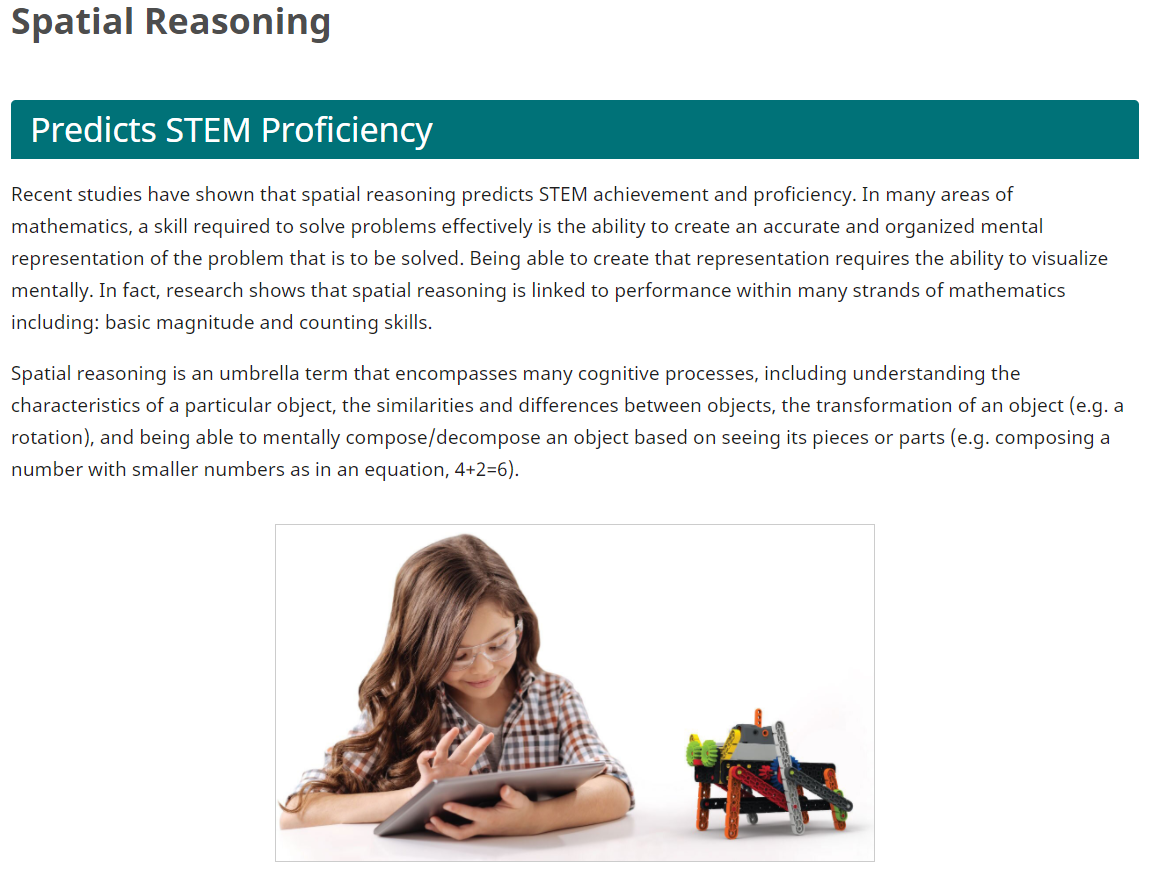
Spatial reasoning involves the the capacity to understand, reason, and remember how objects and space relate to one another. Students use their spatial reasoning skills as they create mental images of imagined and real shapes, objects and structures.
Why teach spatial reasoning?
- Spatial reasoning is an important predictor of achievement in STEM careers
- Increased achievement in math and science
- Promote skills and interest in future careers in STEM disciplines
VEX GO STEM Lab instruction provides scaffolding for teachers to encourage Spatial Reasoning and facilitate discussions that introduce Spatial Language.
Applying Spatial Reasoning
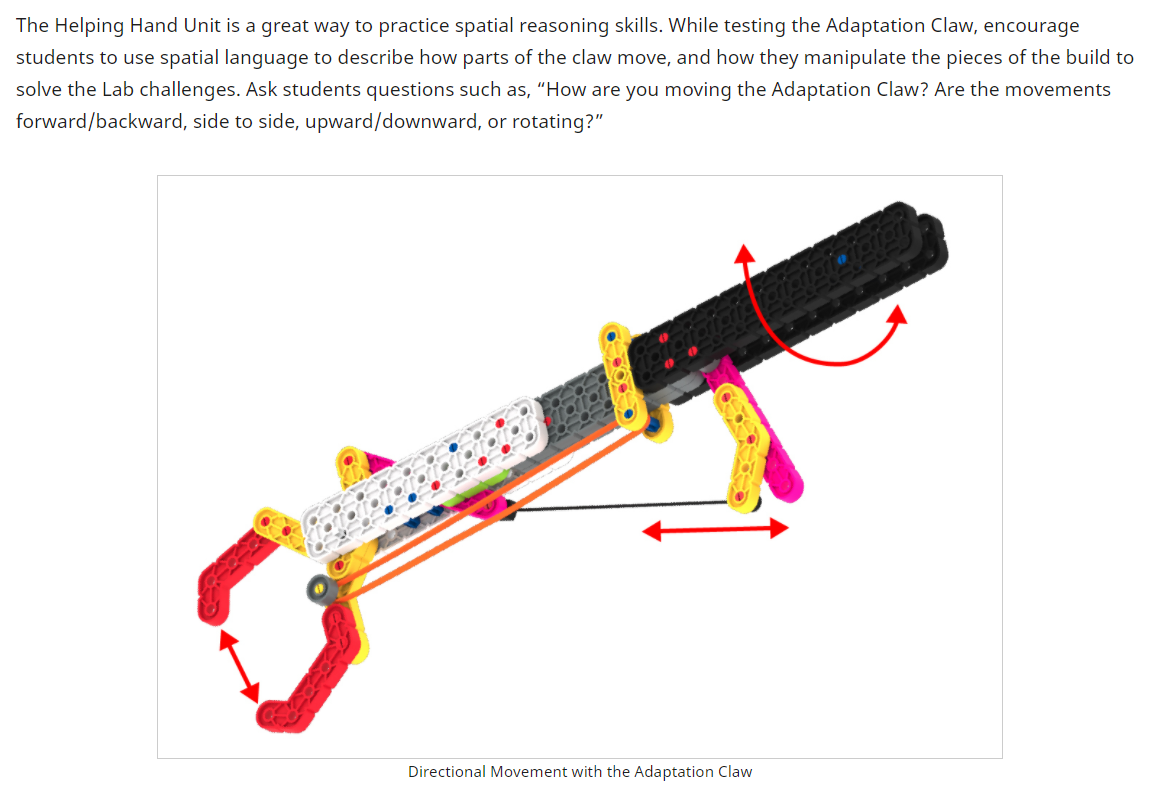
VEX GO STEM Lab provide opportunities for students to practice spatial reasoning skills through guided and informal discussions.
Examples of provided discussion prompts:
- How many pieces did you use during your build?
- Was that piece on top of or below the other piece?
- Can you model, using your hands, how the build works?
Prompts are provided in the Applying VEX GO section of the Unit Overview, and in the Play sections of each Lab.
Students Demonstrate Their Learning
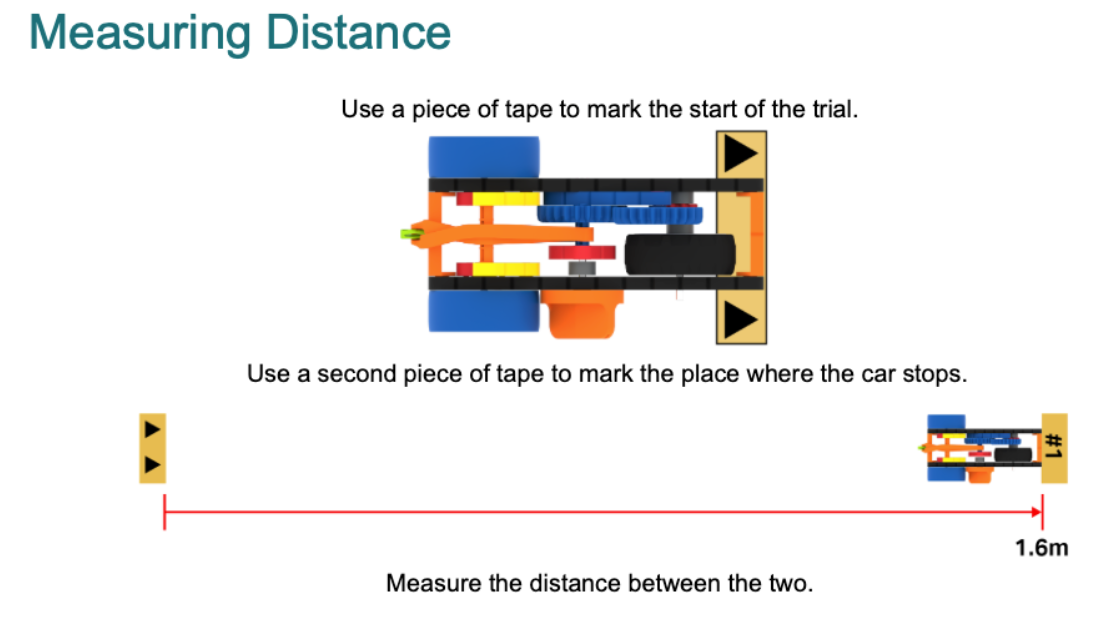
Students enjoy solving problems!
VEX GO STEM Labs are designed to have clear criteria for success and provide students with immediate feedback so they can succeed.
Discussions in the Mid-Play Break and Share sections of each Lab also provide an opportunity to students to demonstrate their learning.
Making a Personal Connection

How do we get students to focus and think about the information that is in the lesson or activity Encourage students to make a personal connection!
At the beginning of each VEX GO STEM Lab, the teacher is guided to introduce the Lab while making a personal connection between the students and the main concepts.
Students continue to make personal connections with VEX GO STEM Lab activities with discussion prompts in the Play and Share sections of each Lab.